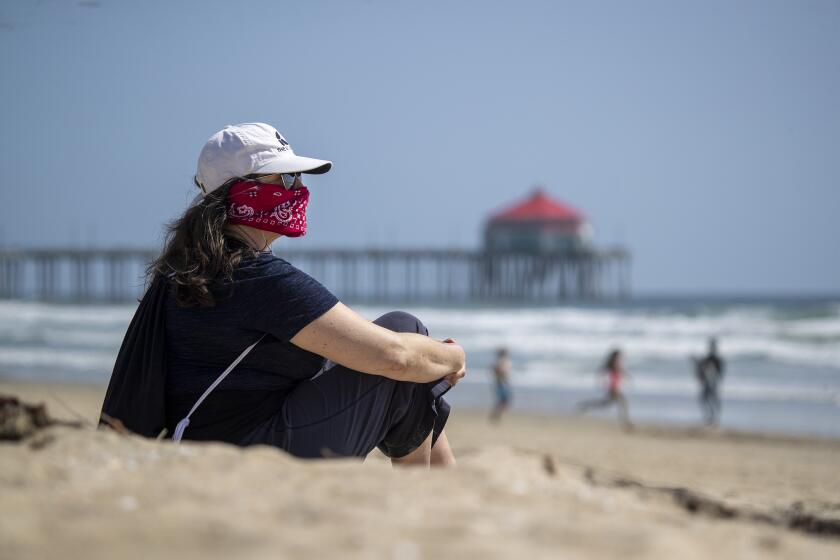In The Pipeline: House of history under our noses
Some of you may be aware that I host, along with Maria Hall-Brown, a segment on PBS SoCal called “Forgotten OC.” Each week, we travel the county in search of interesting historic landmarks and places where history took place.
As much as I can, I like to focus our attention on Huntington Beach because I live here, and also because to me, historically, it’s the most interesting city in Orange County. Going back to the Native Americans who lived along the Bolsa Chica Mesa, to the agriculture and industries in the early 1900s, the oil, the aerospace, the surfing — we live in a region that has experienced many dramatic chapters.
I was reminded of another one last week when Maria and I set off to tape some new episodes.
You’re probably aware that Warner Avenue, Talbert Avenue and a host of other streets were named for notable individuals. But do you know the story of Speer Avenue?
Located just off Beach Boulevard near Slater Avenue, Speer borders what used to be called the Liberty Park section of Huntington Beach. Maria and I (along with our cameraman John and my son, Charlie) walked the street in search of the building numbered 7862. We found it, and while it wasn’t the old structure I’d hoped to find, it was still the former site of a significant local landmark.
It was where a home was once owned by a man named Marion Speer. Born in Texas in 1885, he arrived in Huntington Beach in the 1920s. A western history buff, Speer traveled the country extensively with his wife, collecting artifacts. He even wrote a book, “Western Trails,” which was published in 1932.
In 1937, he built the house that had once stood at 7862, and it became a reliquary for his ever-growing collection. Soon, he had a museum on his hands, named appropriately enough the Marion Speer’s Western Trails Museum. By the mid-1940s, a third wing had been added to help house the arrowheads, railroad spikes, guns, flags and other artifacts.
Schoolchildren would visit regularly, as would tourists and locals. It was one of the most popular places to visit in Huntington Beach.
In 1956, Speer made a deal with his friend Walter Knott to have everything moved for display to Knott’s Berry Farm, provided Knott built a structure to house the collection, which Knott did. Speer was the curator at the museum at Knott’s until 1969, and he died in Fullerton in 1978. So when you visit the Western Museum at Knott’s today, perhaps pause to remember Speer, who made it all possible.
Maria and knocked on the door at the address the day we shot and a young woman who lives there now was completely unaware of the history there. But now she knows, as do you.
Also, over the holidays, did you notice the trees decorated with Christmas ornaments at Goldenwest Street and Pacific Coast Highway, on the bluff? In mid-December, the family and friends of Dane Williams, whom police say was sexually assaulted and killed in San Diego three years ago, gathered to decorate the trees in his honor. My family and I were there to take part, and it was an emotional night for everyone. But mixed with the sadness of loss, there was joy in the cool night air as a marvelous young man was remembered by those who knew him best.
CHRIS EPTING is the author of 18 books, including the new “Hello, It’s Me: Dispatches from a Pop Culture Junkie.” You can write him at chris@chrisepting.com.
All the latest on Orange County from Orange County.
Get our free TimesOC newsletter.
You may occasionally receive promotional content from the Daily Pilot.



